520 corpses, panic and harakiri: the story of one of the most horrible plane crash of the XX century
Categories: History | Technology | World
By Pictolic https://pictolic.com/article/520-corpses-panic-and-harakiri-the-story-of-one-of-the-most-horrible-plane-crash-of-the-xx-century.htmlAugust 12, 1985, Japan was hit by one of the biggest crashes in the history of world aviation, which killed 520 people. Distraught relatives of the victims raided the offices of the airline Japan Airlines, and the head of technical services, unable to bear the remorse, did harakiri.
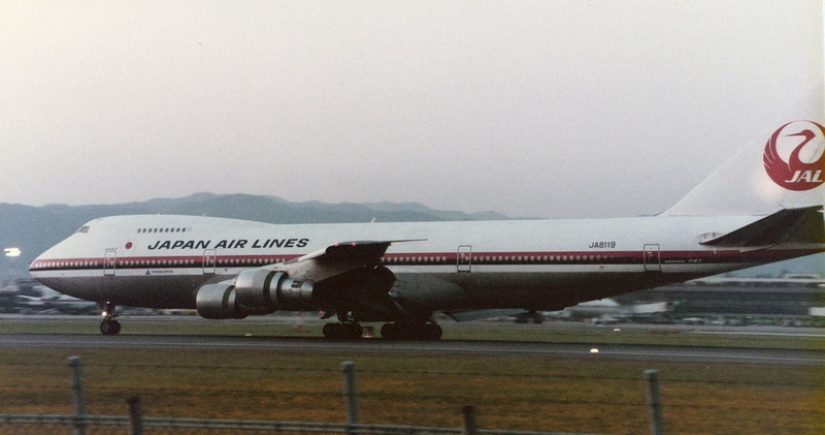

In that ill-fated day, at 18:00, a Boeing 747SR-46 Japan Airlines was preparing to fly from Tokyo to Osaka. The flight belonged to the short distances and lasted 54 minutes. Thanks to a special model of the aircraft, the Board had a capacity of 550 passengers.
At the time of takeoff on Board JAL flight 123 12 were 509 people and 15 crew members. The commander of the aircraft was an experienced pilot — 49-year-old Masami Takahama, who worked for the airline for 19 years. The second pilot was a 39-year-old Yutaka Sasaki with 10 years of experience.
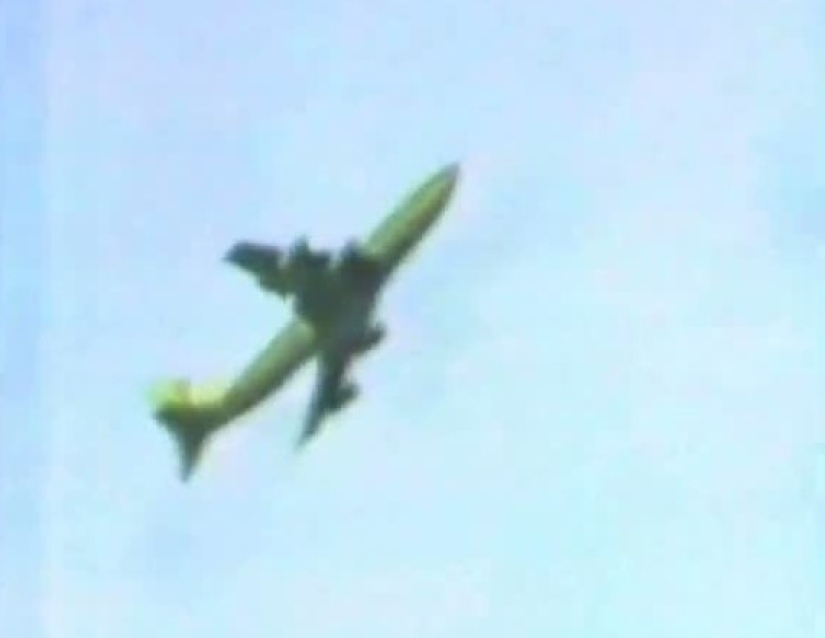
18:12 the plane departed from Tokyo's Haneda airport. 18:24 at the height of 7,200 meters one of the flight attendants asked the commander if it is possible to proceed to the passenger service. After receiving an affirmative response in the cabin there was a loud sound like an explosion. The cabin was shrouded in white smoke.
The pilots alarm that alerts you of a sudden drop in pressure inside the fuselage. They could not understand what had happened, and suggested that disrupted fold the chassis. While the flight engineer reported the malfunction of the hydraulic system.
The captain decided to turn the plane around and return to Tokyo, but when the co-pilot tried to turn the wheel, it turned out that Boeing unmanageable.

Terrestrial Manager was reported, the number "7700", meaning that the aircraft is in distress. The crew and passengers wearing oxygen masks, triggered in case of depressurization of the aircraft.
The pilots tried to go in the opposite direction, but with every minute the situation is worse — the plane started to rock on all three axes with increasing amplitude, logging in spooky mode "Dutch step."
In the cabin started to panic, passengers became ill. They prayed, cried, pulled from the notebooks sheets and wrote farewell letters to relatives.
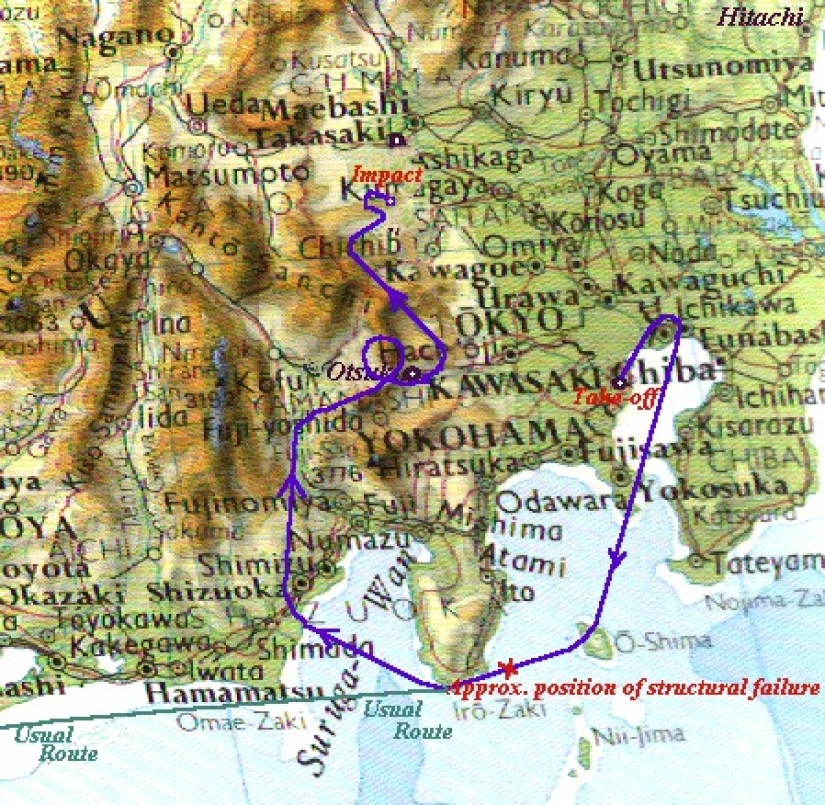
At this time, in the cockpit of the pilots tried to regain control of the plane using only engine thrust. Differentiating the thrust of the left and right of turbines, the crew still managed to steer the ship in the direction of Tokyo.
Managers from the ground and offered various options for an emergency landing, but the pilot didn't have to choose — they are in any second could lose control.
Attempts to start the reduction in the area of mount Fuji has failed. 18:41 the aircraft was out of obedience and made a circle with a radius of 4 km over the city Otsuki. The pilots managed to regain control.
18:47 commander reported to dispatchers that the plane uncontrollable and is about to crash into the mountain. But the crew managed to avoid a collision. However, immediately after that, the plane began to lose altitude. Flying over the Izu Peninsula and the Gulf of Suruga, Boeing was in a mountainous area, making the chance of a happy completion of the flight is minimal.

But even in this situation, the crew continued attempts to control engine thrust, although at one point the plane almost fell into a tailspin. Using the maximum engine thrust and flaps from the emergency electrical system, the crew managed to align the "Boeing". However, the liner by lowering the nose, rushed to the next summit.
The commander of the aircraft leveled the machine, but to avoid another clash with the mountain in no time. The wing was hurt the tops of the trees — the aircraft rolled over and at 18:56 at high speed crashed into a wooded hillside Atsutaka at the height of 1457 metres of 112 kilometers North-West of Tokyo. At the crash site, the fire broke out.
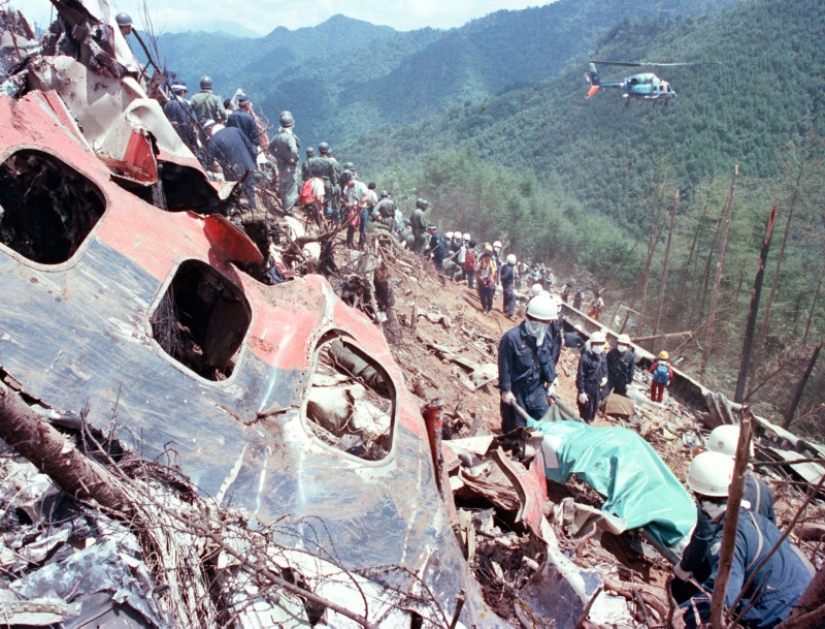
The C‑130 aircraft, the U.S. air force found a place falling through 30 minutes after the crash. The coordinates were transferred to the Japanese, but the arriving helicopter rescue service found that the debris lies on a steep slope, planting in this area difficult.
Moreover, there is burning fire — the commander of the helicopter decided to return to base, reported that traces of the survivors were found.
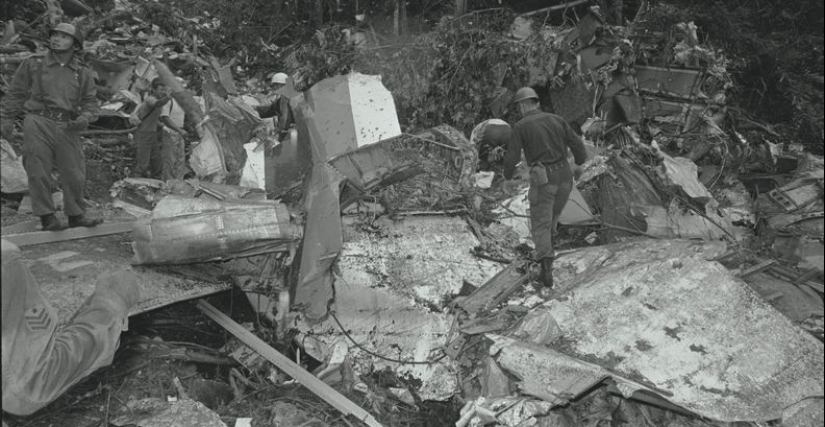
Rescuers arrived after 14 hours, not expecting to meet the living, but the living were four: the 26-year-old Yumi Ochiai, 34-year-old Hiroko Ishizaki with her 8‑year-old daughter Mikiko and 12-year-old Keiko Kawakami.
Yumi Ochiai worked as a flight attendant for Japan Airlines, but at that moment she made a private trip. She said the most information about what happened on Board.
12-year-old Keiko rescuers found the tree the girl who appeared in the time of the crash. For some time he was alive, and her father, but he did not survive a 14-hour wait. The survivors were many, but in addition to the injuries they suffered serious hypothermia after a night on the mountain, and not waiting for help.
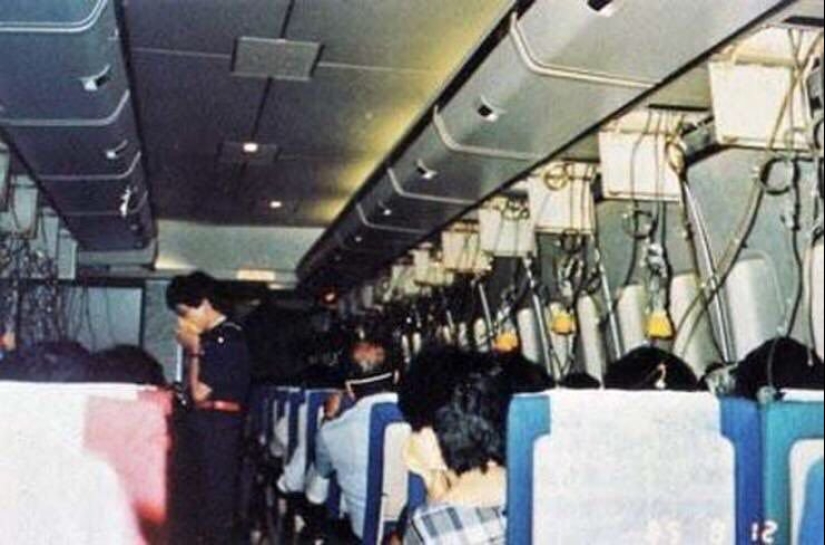
At the crash site was discovered the black boxes and numerous letters to dead relatives.
Japan experienced a real shock — relatives of the victims raided the offices of Japan Airlines and avoided appearing in public places. President of the company resigned without waiting for the outcome of the investigation, and the head of technical services at the airport did harakiri.
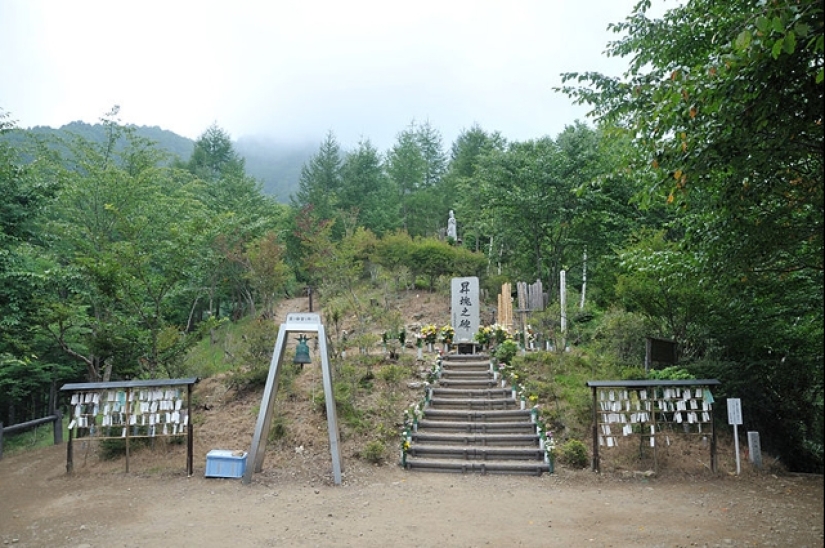
But why the plane crashed? 13 August 1985, the destroyer of naval forces of Japan's self-defense picked up floating in Sagami Bay, the wreckage of the vertical and the horizontal tail of the Boeing. This meant that in flight, the plane lost a fin and elevators.
When such breakdowns the plane is doomed. Moreover, he had to fail almost immediately, but the pilots managed to keep him in the air for half an hour. Their skill has saved four lives saved people could have been much greater if not for a 14-hour wait.
And the main question: why the aircraft in flight has lost his tail?
It turned out that another 2 June 1978 due to pilot error Board JA8119 hit the tail part on the runway of the airport of Osaka, resulting in corrupted the rear pressure bulkhead — bulkhead that separates the rear passenger compartment of the ship, which is supported by the roughly constant pressure of the air leaking from the rear of the aircraft.
The repair was carried out in Japan, it was necessary to strengthen the damaged half of the pressure bulkhead using the whole plate amplifier embedded in three rows of rivets. But instead of setting a single amplifier with three rows of rivets technique used two separate reinforcing element, one of which was fixed a double row of rivets, and the second only single.
In the repair team decided that "will do" — and indeed, the plane continued flying. But during takeoffs and landings load gradually destroyed the metal in the ground drilling. Disaster was inevitable — the question was only in when it occurs.
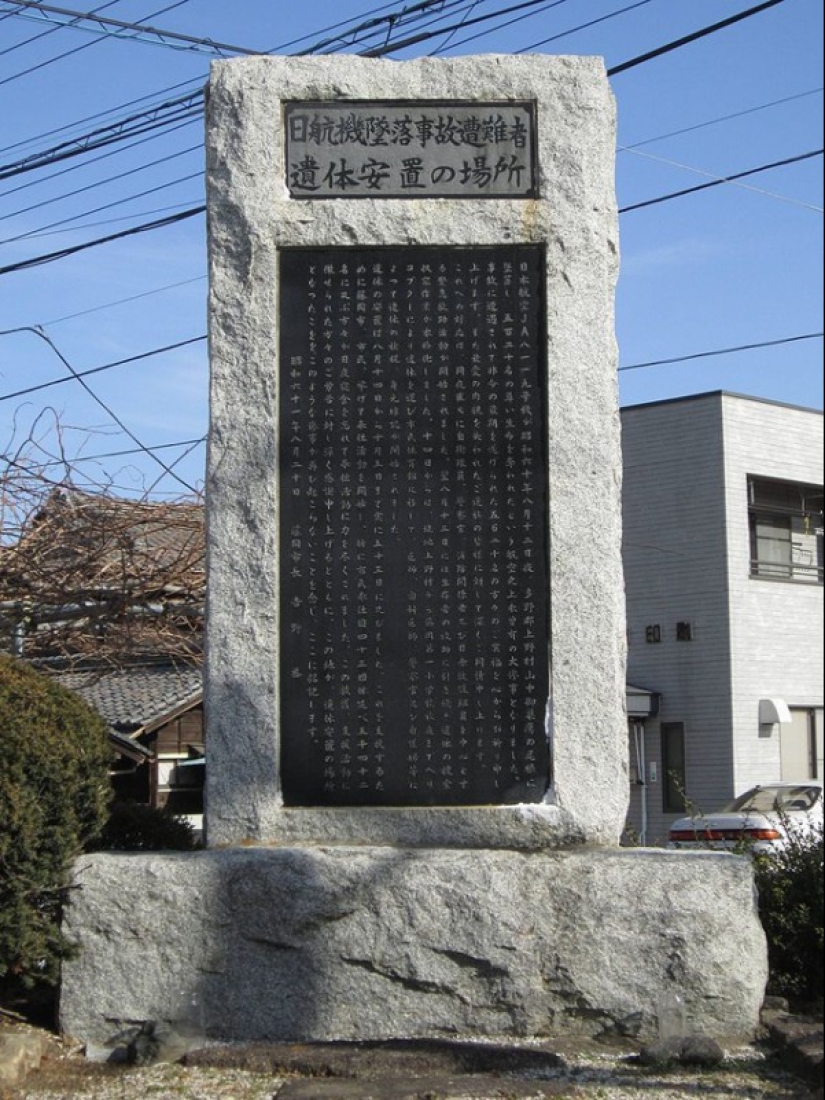
August 12, 1985, the pressure bulkhead could not stand the pressure from the next take-off and completely destroyed, killing the pipelines of hydraulic systems. The air from the cabin under high pressure hit in the cavity of the vertical tail fin, knocking him like a cork from a bottle of champagne. The plane lost control.
After the disaster, Japan Airlines for a very long time has restored its reputation, but Boeing has tightened the rules for repair of ships and held an urgent inspection of liners around the world. But human life was not to return.
Keywords: Japan | Plane crash | History | World | Technology | Corpses | Panic
Post News ArticleRecent articles

Most men want to see in a woman at the same time a passionate lover in bed, a good hostess in the kitchen and a faithful friend in ...

Cats are everywhere, where live and work people. There are some in the places where they seemingly did not place. For example, in ...
Related articles

The pearl of French architecture and the magnificent palace of a vain monarch, Versailles was created to emphasize all the ...

In the Middle Ages, in order to become a Pope, it was not necessary to go through a complex procedure of election and ...

What they were secular beauties of the past? Both were prominent ladies almost a hundred years ago, coming to light? How they ...

Photography is an art, and a person with a camera who creates something unique has every right to be called an artist. But among ...